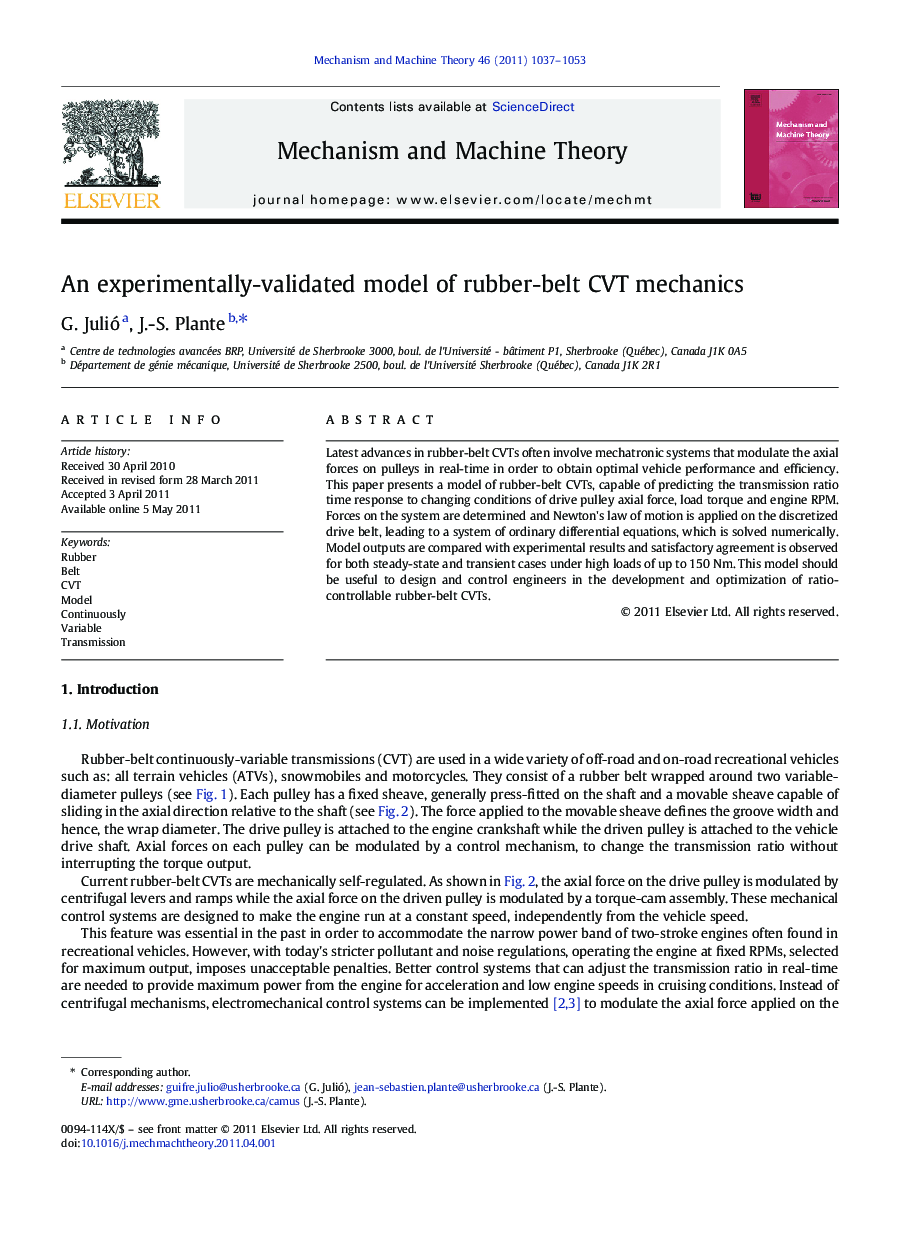| Article ID | Journal | Published Year | Pages | File Type |
|---|---|---|---|---|
| 802170 | Mechanism and Machine Theory | 2011 | 17 Pages |
Latest advances in rubber-belt CVTs often involve mechatronic systems that modulate the axial forces on pulleys in real-time in order to obtain optimal vehicle performance and efficiency. This paper presents a model of rubber-belt CVTs, capable of predicting the transmission ratio time response to changing conditions of drive pulley axial force, load torque and engine RPM. Forces on the system are determined and Newton's law of motion is applied on the discretized drive belt, leading to a system of ordinary differential equations, which is solved numerically. Model outputs are compared with experimental results and satisfactory agreement is observed for both steady-state and transient cases under high loads of up to 150 Nm. This model should be useful to design and control engineers in the development and optimization of ratio-controllable rubber-belt CVTs.
Research highlights► We model rubber-belt CVTs using a discrete approach. ► The model outputs the transmission ratio time response to changing conditions. ► Predictions are compared to experimental results in steady-state and transient cases. ► Satisfactory agreement is observed.
